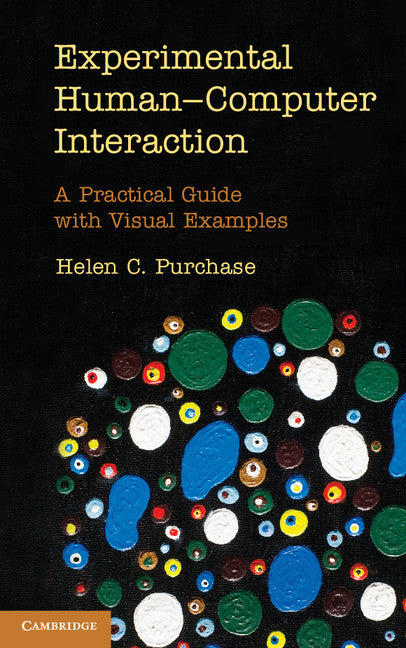Freshly Printed - allow 4 days lead
Couldn't load pickup availability
Experimental Human-Computer Interaction
A Practical Guide with Visual Examples
Takes the human-computer interaction researcher through the complete experimental process, from identifying a research question, to conducting an experiment and analysing the results.
Helen C. Purchase (Author)
9781107010062, Cambridge University Press
Hardback, published 23 July 2012
257 pages, 72 b/w illus. 67 tables
23.6 x 15.8 x 1.8 cm, 0.48 kg
'This is an excellent primer for beginning researchers in HCI related topics who need to undertake experiments and/or evaluations as part of their research activity. The example based approach and clear no-nonsense style of writing make it a very readable text. This is not a book that will sit on your shelf, it will be used and referred to often - it will be mandatory reading for my commencing research students.' John Hosking, Australian National University
Experiments that require the use of human participants are time consuming and costly: it is important to get the process right the first time. Planning and preparation are key to success. This practical book takes the human-computer interaction researcher through the complete experimental process, from identifying a research question to designing and conducting an experiment, and then to analysing and reporting the results. The advice offered in this book draws on the author's twenty years of experience running experiments. In describing general concepts of experimental design and analysis she refers to numerous worked examples that address the very real practicalities and problems of conducting an experiment, such as managing participants, getting ethical approval, pre-empting criticism, choosing a statistical method and dealing with unexpected events.
1. Introduction
2. Defining the research
3. Experimental procedure
4. Data collection and qualitative analysis
5. Statistics
6. Reporting
7. Problems and pitfalls
8. Six principles for conducting experiments
Appendix 1. Independent measures examples
Appendix 2. Statistical formulae
Appendix 3. Factor analysis example.
Subject Areas: Human-computer interaction [UYZ], Image processing [UYT], Computer vision [UYQV], Robotics [TJFM1], Scientific equipment, experiments & techniques [PDN], Research methods: general [GPS]


